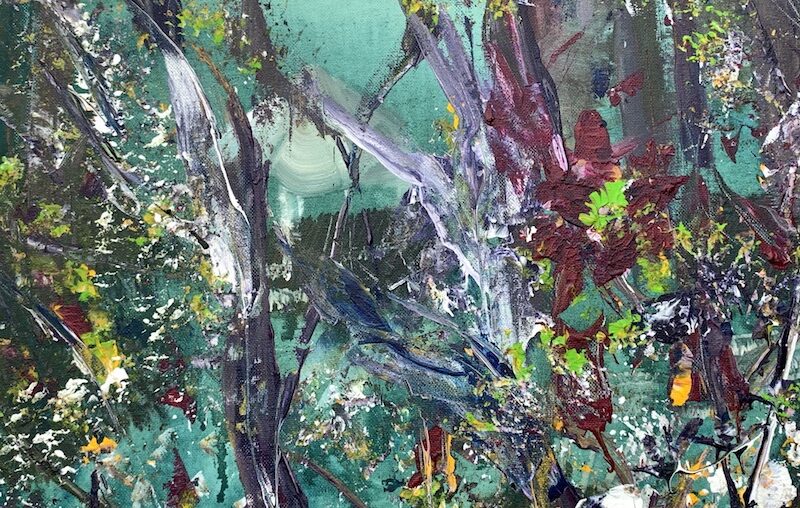Professor Janet Farley was a pointy woman. Her nose was pointy, her chin was pointy, her lapels were pointy, her stilettos were pointy, and she pointed her clipboard at the two men in front of her and stabbed the air at them in sharp staccato points with a very pointy pencil.
The men were her fellow judges, both professors of fine art at Monash University, both lovers, and both intimidated enough by this pointy female to hold their clip-boards over their genitalia like shields.
All were standing in the judge’s tent of the 2011 St Kilda Botanical Gardens art competition.
While the contest was an opportunity for budding artists to make their name, it was also an opportunity for the judges to make theirs.
They not only had the power to place names in the annals of art history, but strategic judging would place them half a rung higher on the very precarious ladder of academia.
Professors John Barkly, Harry Mackintosh and Janet Farley split to peruse the 250 canvases strung on chicken wire along the walls of the gallery tent.
Each had to choose one painting. And from those would be drawn one winner.
The walls of the tent were a garden in themselves. Close ups of roses and cacti and long distance views of the lake and the glass house beyond, sprawling oaks and strange New Guinean palms. There were expressionist views of trees with a thousand eyes, there were surrealist views with picnickers floating in the air, there was a very good Van Gogh-style rendition of tall grasses with flowing stems and dainty white wildflowers dotting a turbulent yellow sky, and an ultra- modern painting which consisted of a simple black dot in the centre of a blank white canvas.
Mackintosh adjusted his glasses to get a closer look at the dot. Barkly nodded at the floating picnickers and Janet Farley examined the back of the Van Gogh, signed, incidentally, Vincent.
The judges regrouped. Each man plumped out his chest, aimed clipboard and pencil at Janet, but Janet fired the first shot.
“ Vincent’s use of old canvas is a brilliant comment on environmental degradation.”
Barkly closed in on her. He spoke with intimate authority and velvet sympathy for someone not as well schooled as he in matters of fine art.
“Floating picnickers does it with more sophistication.”
Janet imperceptibly relaxed her clipboard and stood closer to him so that their arms were touching.
A spring wind blew through the tent and turned together and faced Mackintosh, still arms still touching, without any sign of the need to withdraw.
Mackintosh removed his glasses and squinted at the two, now one.
“The dot,” he pouted, “shows the clearest vision. Brilliant! A garden without….p-p-p-POLLUTION”
And with the word ‘pollution’ he snarled like a Rottweiler at Mackintosh.
So who won?
If you mean which painting won, the dot, of course. Because nobody understood it, and therefore nobody could dispute it.
Yet even though his choice won the contest, Mackintosh boiled with envy, emitting green steam from his nostrils and mouth as he watched Barkly and Janet Farley leave the gardens together.
It is rumoured that Macintosh was behind the snapshot and the morning Sun’s headlines, “JUDGES IN BED TOGETHER.”
The prize was revoked, then reinstated with compensation to the artist of the dot, whose reputation had been damaged, the myriad commissions he was receiving notwithstanding.
Barkly reconciled with Mackintosh, wore an apron and promised never to stray.
Janet sold her story to Oprah and was last seen on the arm of film director Bruce Beresford.
The Vincent went to auction and sold for three million dollars as an undiscovered original.
And the good artists who had each paid $20 to enter the St Kilda Botanical Gardens Art Competition busily prepared for next year’s show.
Who knows?
Someone might get lucky!

